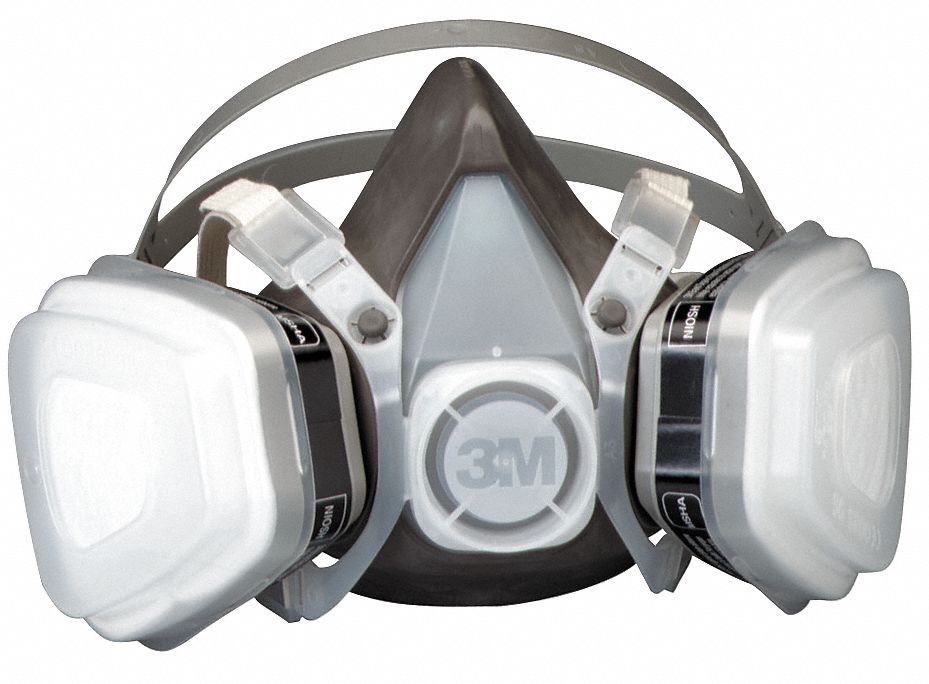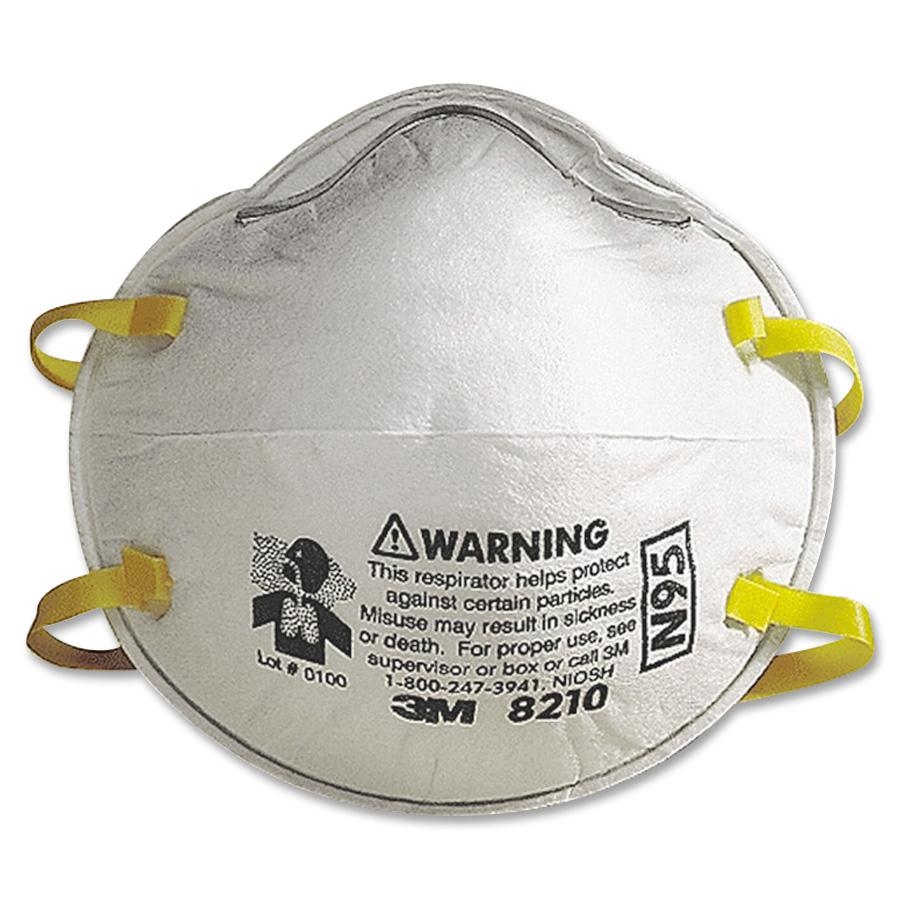

Many years ago, when a spray-painting contractor needed to get a respirator because he would not be able to breathe safely without one, he just picked one up at the paint store where he got all his other supplies, slapped it on and went to work! HOPEFULLY, it fit properly and had the right cartridge/filter combination to protect his health, but you never knew for sure! There were also distinctions between dust masks and respirators. Dust masks were not considered respirators even though some people used them in environments that were so dusty, they could not work safely without them. Fast forward to the 1999 and things took a dramatic shift in respiratory protection.
Since 1999, OSHA has mandated that all workers who are required to wear a respirator FIRST:
1. Be medically evaluated by a physician or other licensed health care practitioner to ensure their pulmonary health is sufficient to wear a respirator,
2. Be fit tested with the exact make and model of respirator you are to wear in the field, AND
3. Be trained on the OSHA Respiratory Protection Standard requirements.
BEFORE they can wear their respirator for the first time for a work activity!
Furthermore, employers who have workers who are required to wear respirators must also establish a written Respiratory Protection Program and designate a trained Respiratory Program Administrator to oversee the that program. They must provide for the medical evaluations, fit tests and training at no cost to their employees. Finally, they made “dust masks” into “filtering facepiece” respirators that mandate the same medical evaluations and fit tests as the rubber, half mask style respirators under the standard. Meaning, if you mandate to an employee that they must wear a dust mask while they perform a work activity, this would be considered “mandatory use of a respirator” and would require the medical evaluation, fit testing, training, written program and administrator to be in place before that activity can legally take place.
Many years ago, I had a client who was chipping out concrete steps at an outdoor construction project when OSHA entered the site on a compliant about the concrete chipping activities. They were concerned about the noise and silica dust exposure potential for the workers. During their compliant investigation, the compliance officer attached air sample pumps to two of the workers and asked them questions about respiratory protection. The two workers were wearing dust masks and the officer asked them if they were required by their boss to wear them. They both answered YES! even though their boss never told them they must wear the masks during this chipping activity. When the audit was over, OSHA found the workers were not overexposed to silica, but their company was issued a respiratory protection citation ANYWAY! OSHA felt the company was requiring theirs workers to wear respirators (the dust masks), but did not have a written program, medical evaluations, fit testing, etc.
Here is the language they cited (in red and underlined):
1910.134(c)(1) In any workplace where respirators are necessary to protect the health of the employee or whenever respirators are required by the employer, the employer shall establish and implement a written respiratory protection program with worksite-specific procedures. The program shall be updated as necessary to reflect those changes in workplace conditions that affect respirator use. The employer shall include in the program the following provisions of this section, as applicable:
1910.134 (c)(1)(i)Procedures for selecting respirators for use in the workplace;
1910.134(c)(1)(ii)Medical evaluations of employees required to use respirators;
1910.134(c)(1)(iii)Fit testing procedures for tight-fitting respirators;
1910.134(c)(1)(iv)Procedures for proper use of respirators in routine and reasonably foreseeable emergency situations;
1910.134(c)(1)(v)Procedures and schedules for cleaning, disinfecting, storing, inspecting, repairing, discarding, and otherwise maintaining respirators;
1910.134(c)(1)(vi)Procedures to ensure adequate air quality, quantity, and flow of breathing air for atmosphere-supplying respirators;
1910.134(c)(1)(vii)Training of employees in the respiratory hazards to which they are potentially exposed during routine and emergency situations;
1910.134(c)(1)(viii)Training of employees in the proper use of respirators, including putting on and removing them, any limitations on their use, and their maintenance;
and1910.134(c)(1)(ix)Procedures for regularly evaluating the effectiveness of the program.
There is only one “out” of the written program, medical eval, fit test, etc. and it involves the VOLUNTARY use filtering facepiece respirators (dust masks) ONLY:
1910.134(c)(2)(i) An employer may provide respirators at the request of employees or permit employees to use their own respirators, if the employer determines that such respirator use will not in itself create a hazard. If the employer determines that any voluntary respirator use is permissible, the employer shall provide the respirator users with the information contained in Appendix D to this section (“Information for Employees Using Respirators When Not Required Under the Standard”); and 1910.134(c)(2)(ii)In addition, the employer must establish and implement those elements of a written respiratory protection program necessary to ensure that any employee using a respirator voluntarily is medically able to use that respirator, and that the respirator is cleaned, stored, and maintained so that its use does not present a health hazard to the user. Exception: Employers are not required to include in a written respiratory protection program those employees whose only use of respirators involves the voluntary use of filtering facepieces (dust masks).
To summarize, if you tell your employees to “put on a dust mask” when they sweep up the dusty parking garage, you are, in effect, stating “you are required to wear a filtering facepiece respirator while sweeping the garage” under the language of this standard. That means you now need to have each employee medically evaluated by a health care professional, train them on the respiratory protection standard and how to use their respirator, establish a written program, fit test them with their dust mask and THEN they can start sweeping for the first time while wearing their N95 masks. Alternatively, if you say “here are some dust masks, wear on if you want while sweeping the garage” you are setting up a VOLUNTARY usage situation (assuming they are not overexposed to dust and would be required by the OSHA regulations to wear one) that would require the information in Appendix D to be given to the employees before they choose to wear a dust mask or not…MUCH FASTER AND EASIER!
